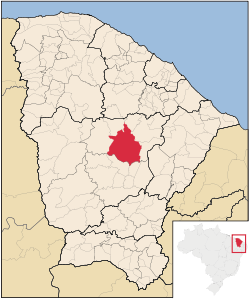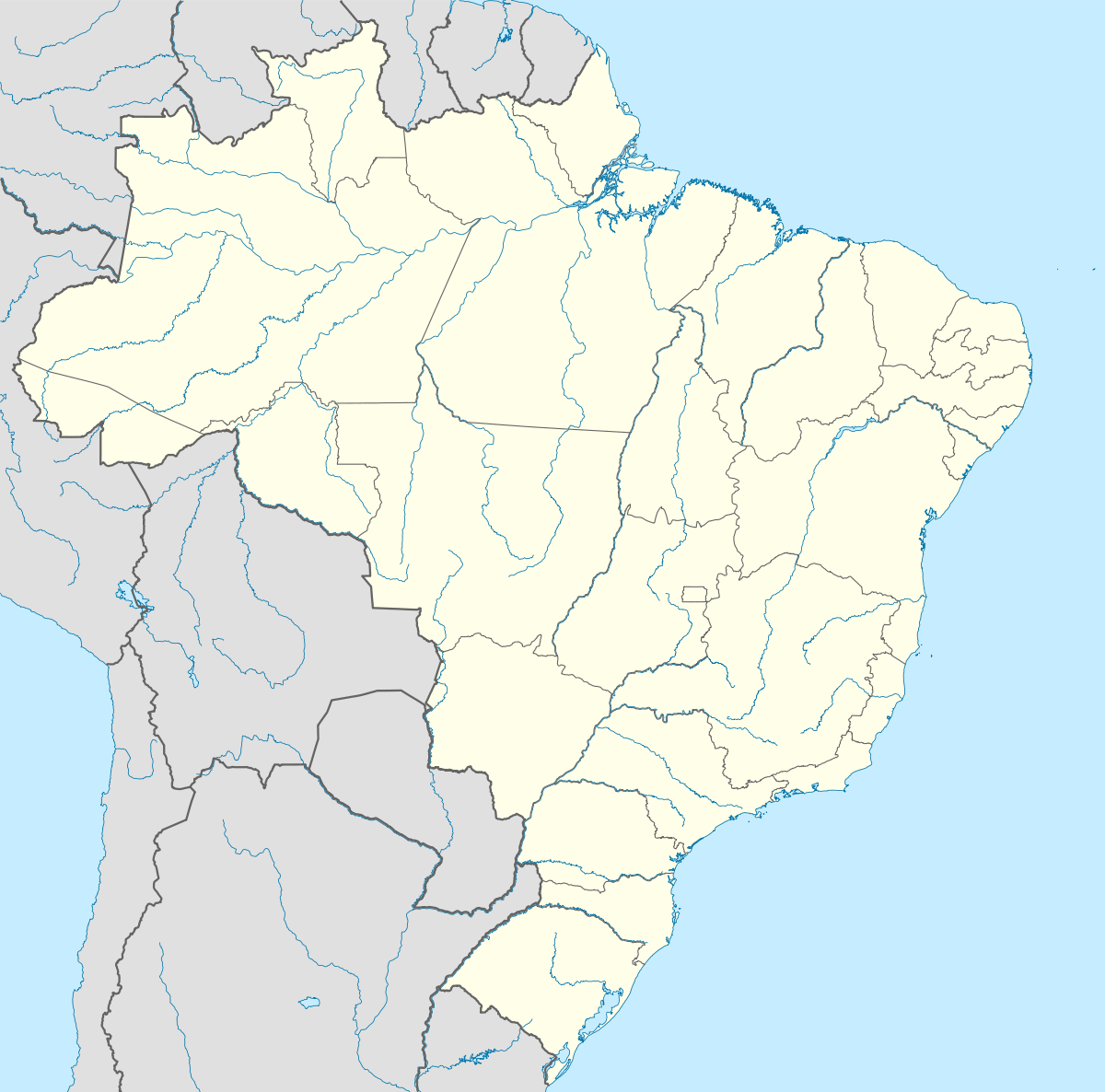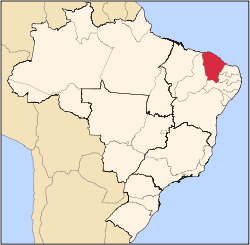Quixeramobim, Ceará
| Quixeramobim | |
|---|---|
| Municipality | |
 Location in Ceará state | |
 Quixeramobim Location in Brazil | |
| Coordinates: 5°12′S 39°17′W / 5.200°S 39.283°WCoordinates: 5°12′S 39°17′W / 5.200°S 39.283°W | |
| Country |
|
| Region | Northeast Region |
| State | Ceará |
| Population (2010) | |
| • Total | 72,000 |
| Time zone | BRT (UTC-3) |
Quixeramobim (formally Santo Antônio do Boqueirão de Quixeramobim; formerly Nova Vila do Campo Maior) is a municipality in central State of Ceará, northeastern Brazil. It has a population of about 72,000 (2010 census). The local biome is caatinga hiperxerófila.
Climate
Semi-arid tropical warm with rainfall concentrated from February to April. The average temperature is 26-28C and the average annual rainfall is 708 mm.
The Paus Brancos district of the municipality was designated a priority area for conservation and sustainable use when the Caatinga Ecological Corridor was created in 2006.[1]
History
It was founded in the 17th Century on lands adjacent to Rio Ibu (Quixeramobim) and became a municipality in 1755.
Economy
The primary economic occupations are farming and ranching.
References
- ↑ Mattos, Marluza (2006), Ministério cria Corredor Ecológico da Caatinga (in Portuguese), Ministério do Meio Ambiente, retrieved 2016-11-01
